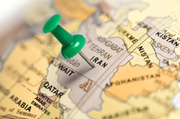Mahdi Zare’, the deputy director of the Earthquake Research Center, said the quake was caused by movements of the Eivanaki fault in southeast Tehran.
The epicenter of the quake was in the Pakdasht area of southeast Tehran.
Earthquake Research Center Director Abbas-Ali Tasnimi told the Mehr News Agency that it is not scientifically possible to predict the timing of an earthquake, and thus aftershocks could hit Tehran in the coming days.
“Based on our studies of Tehran’s fault lines, we didn’t expect a quake in southeast Tehran,” he stated.
The fact that an earthquake occurred with an epicenter in that location indicates that the fault in southeast Tehran had been dormant but might become more active at any time, he added.
Tehran sits on major seismological fault lines and is prone to sever earthquakes.
Following the earthquake in Bam, Iranian officials began considering proposals to move the capital to safer ground.
In 2003 an earthquake measuring 6.5 on the Richter scale jolted the city of Bam in Kerman Province, leaving about 30,000 people dead.
The deadliest earthquake to hit the country in recent years, which measured 7.7 on the Richter scale, struck the northwestern provinces of Gilan and Zanjan in 1990, killing about 37,000 people.
MH/PA/SL/HG
END
MNA
























Your Comment